Throughout his artistic career Gérome made numerous visits to the Orient - to Egypt, Turkey, Syria, Palestine and Sinai. His unfailing interest in the depiction of scenes from the life of the Muslim world gave him a reputation as an ethnographic artist, of which he was very proud. His orientalising compositions are often of great documentary value. Gérome produced very precise representations not only of exotic costume, architecture and interiors, but also of different ethnic types. In this painting we see a Turkish bath in a harem. In the centre, lit through a window in the ceiling, we see two white women and a dark-skinned slave; in the depth, by the pool, are the smaller figures of naked odalisques. With pedantic care Gérome painted the figures and the details of the setting: the smooth surface of the marble floor, the coloured tiles, the furniture and the clothing. The style of Gérome's oriental works, realistic in content and classic in technique, is often described as academic realism.
Thursday, May 31, 2012
Barend Cornelis Koekkoek - Summer Wooded Landscape with a Castle [1851]
![Barend Cornelis Koekkoek - Summer Wooded Landscape with a Castle [1851] by Gandalf's Gallery](http://farm8.staticflickr.com/7225/7306953004_27abb2dab9.jpg)
Barend Cornelis Koekkoek - Summer Wooded Landscape with a Castle [1851], a photo by Gandalf's Gallery on Flickr.
Barend Cornelis Koekkoek (Middleberg, 1803 - Kleve, 1862) was one of the most important figures of the Dutch Romantic School. He became famous for his wooded and forest landscapes and his snow scenes, filled with large trees, winding paths, hilltops, ruins and of Meindert Hobbema and Jan Wijnants. Although Koekkoek wrote in his memoirs that he was interested in the simplicity of nature, the idyllic atmosphere of many of his landscapes was conceived in the spirit of Romanticism.
Koekkoek was born in Middelburg and received his earliest tuition from his father Johannes Hermanus Koekkoek (1778-1851) who specialised in marine subjects and river scenes. He then studied under Abraham Krayestein at the Middelburg Drawing Academy and at the Amsterdam Academy between (1825-1826). He first lived in Hilversum and later in Amsterdam, spending the summers in the wooded Beek and Ubbergen. In 1833, Koekkoek married Elize Therese Daiwaille who was also a painter and in 1834 they settled at Kleve. He published his Memoirs and Reports of a Landscape Painter in 1841 and in 1845, Koekkoek was commissioned by the King of Holland to paint a series of landscapes.
[Oil on panel, 50.8 x 62.2 cm]
Wednesday, May 30, 2012
Mary Cassatt - Little Girl in a Blue Armchair [1878]
Inspired by Edgar Degas, Pierre-Auguste Renoir, and other members of their circle, Cassatt (American, 1844 – 1926) embraced the Impressionists' commitment to forthright storytelling about inconsequential subjects. In a room crammed with haphazardly arranged furniture, the daughter of friends of Degas sprawls on an overstuffed chair while Cassatt's Brussels griffon rests on another. Although Cassatt's candid picture of a bored or exhausted child repudiates traditional portraits of charming little girls in proper poses holding faithful dogs, she was enraged when the American jury rejected it for display at the 1878 Exposition Universelle. Instead, she showed it with the Impressionists in 1879, the first of her four exhibitions with the group.
Anton Mauve - Morning Ride [1876]
A group of horses descend at a leisurely pace from the dunes to the beach. It is a summer's day, around noon: the sun is high and shadows are short. Well-to-do, well-dressed equestrians are taking a relaxing ride on the beach at Scheveningen, a popular coastal resort of the day. At the foot of the dune are a number of bathing huts. These riding horses are an unusual feature in a piece by Anton Mauve. He normally painted workhorses and animals in their natural environment. He was particularly famous for his landscapes with sheep.
Tuesday, May 29, 2012
Camille Corot - Marietta, the Roman Odalisque
Marietta poses in the studio of Achille Benouville which Corot used during his third and last trip to Rome. Worked in smears and showing the initial layout of the pencil, the work is a subtle variation of pink ochre, brown, white and pale green.
[Oil on paper mounted on canvas, 29.3 x 44.2 cm]
Edgar Degas - Four Dancers [c.1899]
Degas frequented the ballet and opera, where he found subjects not only in performance but also within the unexpected frames created by the angles of stage wings and practice-room mirrors.
He never accepted the label impressionist, and his momentary, snapshot-like views result, not from spontaneous improvisation, but from deliberate arrangement. An avid photographer, his compositions were often influenced by that new medium. Here, for example, the figures are clustered to the left, some cut off at the picture edge. We cannot even be certain that it is four dancers we see - perhaps, instead, this is a single figure, moving as in the sequential photographs of running horses and men by Eadweard Muybridge
The sketchy background of the stage set, painted in a broad, almost blurry manner, is typical of Degas' late works, but he trains a sudden sharp focus on the dancers' backs. Our eye follows the linked movements of their arms, as Degas described in a sonnet: "The ribbon of her steps twists and knots...."
[Oil on canvas, 151.1 x 180.2 cm]
Monday, May 28, 2012
Jens Juel - Joseph Greenway [1788]
Born in Devon, the sitter amassed a fortune as captain of a Danish East Indiaman and acquired Danish citizenship in 1785. He was Sheriff of Exeter from 1802 to 1803 and Mayor from 1804 to 1805. In 1821 however, he is recorded as bankrupt and dead. The background of the painting is said to represent an estate north of Copenhagen which belonged to a friend of the sitter.
Juel (1745 - 1802) first studied in Hamburg and then, from 1765, at the Academy, Copenhagen. He worked in Rome (1772-76), Paris and Geneva before returning to Copenhagen in 1780. He became court painter in Copenhagen and, later, Director of the Academy.
[Oil on canvas, 79.8 x 99.1 cm]
Adriaen Brouwer - Tavern Scene [c.1635]
Adriaen Brouwer (Oudenaarde, 1605 – Antwerp, January 1638) was a Flemish genre painter active in Flanders and the Dutch Republic in the seventeenth century. He died at the early age of 32 in Antwerp, where he was first buried in a common grave, but, upon instigation of the members of the guild, was reburied on February 1, 1638 in the church of the Carmelites. This work, which is signed on the top step below the woman's skirt, is one of his largest and liveliest peasant pictures. He was greatly admired by contemporary artists for his skill as a painter, and both Rembrandt and Rubens collected his work.
[Oil on oak, 48 x 67 cm]
Sunday, May 27, 2012
David Teniers the Younger - Peasants at Archery [c.1645]
The painting, probably of about 1645, is one of the largest and most ambitious of Teniers's compositions. The action in the foreground is reflected in the disposition of the landscape, which is largely featureless in the centre, behind the seated figure on the bench, but shows buildings to the right behind the two men who gossip together and to the left behind the man running towards the target.
Jan Verspronck - Girl Dressed in Blue [1641]
Here is a portrait of a small girl in a blue dress painted in 1641 by Johannes Verspronck. At this time, Verspronck was a leading portrait painter in Haarlem. Girl Dressed in Blue is his most famous work and one of the best loved portraits of a child from the seventeenth century. The girl has been portrayed as a real adult. Only her child-like face betrays the fact that she cannot be more than about ten years old. In those days, young girls were dressed in the same way as their mothers. It is not known who this girl is, although we can be certain she came from a wealthy family. This can be seen from her dress decorated with gold lace, her excessive jewellery and the feather fan she is holding.
Saturday, May 26, 2012
Wilfred Gabriel de Glehn - The Nymph
A painter of landscapes, figure subjects and portraits, Wilfred de Glehn (1870 - 1951) was one of England’s leading Impressionists, recognised for his direct, painterly style, use of vibrant colour, and ability to capture the fluctuations of sunlight and shadow. Born in London as Wilfrid Gabriel von Glehn, he was of French, Estonian and Scottish ancestry. He converted his name to the less German-sounding ‘de Glehn’ during the Great War. He attended Brighton College and the Government Art Training School, South Kensington, before going to Paris in 1890. There he enrolled at the Ecole des Beaux-Arts, where he received instruction from Gustave Moreau and Elie Delaunay.
[Oil on canvas, 56 x 71 cm]
Archibald George Barnes - By The Lake
Archibald Barnes (1887 - 1934) declared that the work of John Singer Sargent and Charles Sims had more of an impact on the development of his own work than his five years spent studying at the Royal Academy. And his work clearly reflects the focus on tone and taste that were the twin pillars of Sargent’s work in particular. Moreover, he shared Sargent’s fluid brushwork and fascination with pure colour as a means of conveying light. However, Barnes was by nature a ‘new romantic’ in that he loved to depict nature and natural effects, but had no interest whatsoever in realism. It is perhaps his rejection of what he considered the, if not uglier, more ephemeral realities of nature that give his landscape scenes such an arcadian charm, making his work particularly appealing to collectors between the Wars.
[Oil on canvas, 50.7 x 61 cm]
Friday, May 25, 2012
Vincent van Gogh - Sunflowers [1887]
Sunflowers appear amid the variegated bouquets that were the mainstay of Van Gogh's work in Paris in 1886–88. Intent upon updating his lackluster Dutch palette, he repeatedly turned to painting flowers so as "to render intense colour and not a gray harmony." By the summer of 1887, when he adopted the sunflower as the dominant motif in four pictures, he had found his voice as an original colourist.
[Oil on canvas, 43.2 x 61 cm]
Vincent van Gogh - Self-Portrait [1889]
This image is one of some thirty-five self-representations by Vincent van Gogh. As part of an artistic tradition of introspection and self-analysis, the self-portrait was appropriate for a sensitive and thoughtful artist such as Van Gogh. There were also practical reasons for his doing a large number of such works. Professional models were not always available or within the means of a struggling artist. Over the course of his career, Van Gogh would use his own features to explore a variety of painting styles and techniques. His self-portraits constitute fascinating documents of his development as both an artist and an individual.
Thursday, May 24, 2012
David Denby - Tea Time [1991]
David Denby (born 1946) is an American painter.
[Oil on canvas, 60.5 x 50.5 cm]
[Oil on canvas, 60.5 x 50.5 cm]
Claude Monet - Woman with a Parasol, Madame Monet and Her Son [1875]
![Claude Monet - Woman with a Parasol, Madame Monet and Her Son [1875] by Gandalf's Gallery](http://farm9.staticflickr.com/8162/7260579850_9340ae9a2c.jpg)
Claude Monet - Woman with a Parasol, Madame Monet and Her Son [1875], a photo by Gandalf's Gallery on Flickr.
With Manet's assistance, Monet found lodging in suburban Argenteuil in late 1871, a move that initiated one of the most fertile phases of his career. Impressionism evolved in the late 1860s from a desire to create full–scale, multi–figure depictions of ordinary people in casual outdoor situations. At its purest, impressionism was attuned to landscape painting, a subject Monet favored. In Woman with a Parasol – Madame Monet and Her Son, his skill as a figure painter is equally evident. Contrary to the artificial conventions of academic portraiture, Monet delineated the features of his sitters as freely as their surroundings. The spontaneity and naturalness of the resulting image were praised when it appeared in the second impressionist exhibition in 1876.
Woman with a Parasol was painted outdoors, probably in a single session of several hours' duration. The artist intended the work to convey the feeling of a casual family outing rather than a formal portrait, and used pose and placement to suggest that his wife and son interrupted their stroll while he captured their likenesses. The brevity of the moment portrayed here is conveyed by a repertory of animated brushstrokes of vibrant colour, hallmarks of the style Monet was instrumental in forming. Bright sunlight shines from behind Camille to whiten the top of her parasol and the flowing cloth at her back, while colored reflections from the wildflowers below touch her front with yellow.
[Oil on canvas, 100 x 81 cm]
Wednesday, May 23, 2012
Charles-Francois Daubigny - St Paul's from the Surrey Side [1871-73]
![Charles-Francois Daubigny - St Paul's from the Surrey Side [1871-73] by Gandalf's Gallery](http://farm8.staticflickr.com/7240/7254406622_01e585ae64.jpg)
Charles-Francois Daubigny - St Paul's from the Surrey Side [1871-73], a photo by Gandalf's Gallery on Flickr.
This view shows St Paul's Cathedral, in the distance, left of centre. The vantage point of the artist was on the south, or Surrey side of the river Thames, between Waterloo Bridge and Blackfriars Bridge. Daubigny first visited London in 1866, returning in 1870-71 to escape the Franco-Prussian war. This painting, dated 1873, was either begun on the spot and finished in the studio, or was worked up from sketches made of the river during this visit.
[Oil on canvas, 44.5 x 81 cm]
Nicolas Poussin - The Adoration of the Golden Calf [1633-34]
![Nicolas Poussin - The Adoration of the Golden Calf [1633-34] by Gandalf's Gallery](http://farm8.staticflickr.com/7084/7254401920_d37109f270.jpg)
Nicolas Poussin - The Adoration of the Golden Calf [1633-34], a photo by Gandalf's Gallery on Flickr.
Moses climbed Mount Sinai to receive the tablets of the Ten Commandments. During his absence the Israelites built an idol with Aaron's help and worshipped it with song and dance. On his return, Moses was so angered by this that he smashed the tablets.
Poussin took the design for the group of dancers from his 'A Bacchanalian Revel Before A Term' another picture of pagan celebration, but turned the group through 180 degrees. The even distribution of blue, red and orange throughout the painting helps to unify the composition as a whole, but colour, for example the white of Aaron's cloak, is also used to isolate individual figures. Poussin also used emphatic gestures in order to tell the story.
[Oil on canvas, 153.4 x 211.8 cm]
Tuesday, May 22, 2012
James McNeill Whistler - Wapping [1860-64]
Whistler inscribed "1861" at the lower right of this early canvas, but he reworked the picture extensively nearly four years later. He sketched the original composition in a letter to an associate and described the girl as "saying to her sailor: 'That's all very well my friend, but don't think you're the first.' You know, she winks and pokes fun at him." In this final revision, however, Whistler eliminated any risqué narrative and instead sought a mood of pensive isolation.
The background remains intact from the artist's first sessions at Wapping, a dockyard on the river Thames, in East London. Painting on site from an inn called The Angel, Whistler created the whole scene en plein air. Against the bright turquoise water and sky, the ships' masts and rigging are quickly sketched in orange and brown strokes.
For this work, Whistler hired Joanna Hiffernan, an artist's model known for her coppery red hair. She soon became his mistress and posed for The White Girl. After finishing that composition in 1862, Whistler returned to Wapping. He repainted its foreground figure group into a harmony of russet browns and blue grays, which are darker shades of the pure oranges and blues in the setting. By its concentration on a consistent colour scheme, this important canvas marks Whistler's major advancement toward "art for art's sake."
[Oil on canvas, 72 x 101.8 cm]
Monday, May 21, 2012
Peter Paul Rubens - Venus and Cupid [c.1606-11]
Rubens was the most outstanding of all Flemish painters, and a leading exponent of Baroque art. The Toilet of Venus is one of his copies of an original by Titian, now lost, which belonged to the Spanish royal collections. This provenance is supported by two significant details: the pearl bracelet and the ring on Venus' left little finger, both of which appeared in Titian's painting. An original version close to the one by Titian is now at the National Gallery of Washington, and there is another canvas by Rubens in the Liechtenstein Collection in Vaduz. The Flemish painter's subtlety of execution and superb mastery of colour are the most distinctive features of his style.
[Oil on canvas, 137 x 111 cm]
Canaletto - Venice, The Piazza San Marco [c.1756]
This is a view of San Marco and the campanile from beneath the colonnade of the Procuratie Nuove on the south side of the piazza. One of the figures in the foreground is holding a cup and saucer; nearby (but out of the picture) is the site of the famous Café Florian, a well-known centre of Venetian social life.
[Oil on canvas, 46.4 x 38.1 cm]
Sunday, May 20, 2012
Attributed to Jacob van Ooost, the Elder - Two Boys Before an Easel [c.1645]
![Attributed to Jacob van Ooost, the Elder - Two Boys Before an Easel [c.1645] by Gandalf's Gallery](http://farm6.staticflickr.com/5447/7232133204_dcef5b6191.jpg)
Attributed to Jacob van Ooost, the Elder - Two Boys Before an Easel [c.1645], a photo by Gandalf's Gallery on Flickr.
Behind the two boys is an easel with a grisaille (a painting which has been executed in monochrome) of the story of Gideon on it. The painting has been attributed to Jacob van Oost on the basis of comparison with a signed painting in Bruges and dated to about 1645 on the grounds of the costumes the boys are wearing.
[Oil on canvas, 56.5 x 58.7 cm]
Saturday, May 19, 2012
Joseph Frederic Charles Soulacroix - Secrets
Charles Frederic Joseph Soulacroix was born in Montpellier in 1825. He painted a number of history paintings on a chivalric theme, but he is best known for his scenes of eighteenth century costumed figures indulging in romantic pursuits. Soulacroix also painted the occasional neo-classical piece, portraying the female nude in elegant poses. However, he seems to have specialised mainly in portraying the activities of his wealthy contemporaries. Soulacroix’s greatest gifts lay in the art of reproducing the textures of silk and satin which clothed his elegant figures and decorated his lavish interiors. His paintings record superbly the lives of the more affluent French families, playing hide and seek, flirting, courting, playing with their pets or making their début at a ball.
Friday, May 18, 2012
Henri Rousseau - Rendezvous in the Forest [1889]
Henri Rousseau (1844 – 1910) was a clerk in the Paris toll service who dreamed of becoming a famous artist. This job allowed him to support his family and gave him time to pursue his true passion - art. From his post at the toll gates and on strolls through the suburbs of Paris, Rousseau observed the world and filled numerous notebooks with sketches from nature. He retired at age forty-nine to become a full-time artist.
Although he painted many exotic scenes, Rousseau never left France. He often explored the Jardin des Plantes, a botanical garden and zoo in Paris where he studied and drew plants and wild animals. He visited museums for artistic inspiration, and based some painted characters on pictures in books and magazines. The public laughed at Rousseau’s bold, primitive style, but he was admired and championed by modern artists such as Pablo Picasso.
Claude Monet - Rouen Cathedral, West Façade, Sunlight [1894]
![Claude Monet - Rouen Cathedral, West Façade, Sunlight [1894] by Gandalf's Gallery](http://farm8.staticflickr.com/7075/7220187118_e59928ae42.jpg)
Claude Monet - Rouen Cathedral, West Façade, Sunlight [1894], a photo by Gandalf's Gallery on Flickr.
In late January or early February 1892, Monet rented rooms across from Rouen cathedral. He remained until spring, painting its looming façade many times, most often as we see it here, close up and cropped to the sides. The next winter he returned to paint the cathedral again, making in all more than thirty views of it. But it was not so much the deeply carved Gothic façade that was Monet's subject as it was the atmosphere, the enveloppe, that surrounded the building. "To me the motif itself is an insignificant factor," Monet said. "What I want to reproduce is what exists between the motif and me."
[Oil on canvas, 100.1 x 65.8 cm]
Thursday, May 17, 2012
Konstantin Yegorovich Makovsky - Religious Procession in Cairo

Konstantin Yegorovich Makovsky - Religious Procession in Cairo, a photo by Gandalf's Gallery on Flickr.
Konstantin Yegorovich Makovsky (Moscow, June 20, 1839 - September 17, 1915) was an influential Russian painter. In 1851 Konstantin entered the Moscow School of Painting, Sculpture and Architecture where he became the top student, easily getting all the available awards. A significant change in his style occurred after traveling to Egypt and Serbia in the mid-1870s. His interests changed from social and psychological problems to the artistic problems of colours and shape. He was one of the most highly appreciated and highly paid Russian artists of the time. Makovsky became a victim of a road accident (his horse-driven carriage was hit by an electric tram) and died in 1915 in Saint Petersburg.
[Oil on canvas, 48 x 63.5 cm]
Henri de Toulouse-Lautrec - Quadrille at the Moulin Rouge [1892]
![Henri de Toulouse-Lautrec - Quadrille at the Moulin Rouge [1892] by Gandalf's Gallery](http://farm6.staticflickr.com/5468/7214217578_e82830e28d.jpg)
Henri de Toulouse-Lautrec - Quadrille at the Moulin Rouge [1892], a photo by Gandalf's Gallery on Flickr.
Wednesday, May 16, 2012
Joseph Wright - The Corinthian Maid [1782-84]
Josiah Wedgwood, the pioneer of pottery manufacturing, commissioned this mythological scene that illustrates the invention of the art of modeling bas-relief sculpture. Wedgwood’s own fired-clay vessels, decorated with low reliefs, would have been seen by an eighteenth-century audience as the aesthetic descendants of this ancient Greek maiden’s attempt to preserve her beloved’s profile.
The girl was the daughter of a potter in Corinth. Her boyfriend was about to embark on a perilous journey to foreign lands, taking only his spear and dog. As a memento, she traced her sleeping lover’s silhouette onto the wall. Her father then used the drawing to model a clay relief, which he baked in his kiln to create a ceramic keepsake.
Joseph Wright (British, 1734 - 1797), a master of artificial illumination, concealed a hanging lamp behind the curtain, suggesting the source of the beams that cast the youth’s shadow. In contrast to the lamp’s gentle glow, intense sparks and embers leap inside the potter’s fiery furnace.
Wright researched his topic for archeological accuracy. Wedgwood loaned antique vases from his own art collection so that Wright could copy their shapes, and the clothing derives from ancient sculpture. Classical symmetry pervades the design; the curtain and archway flank the focal action of the maiden’s stylus tracing the youth’s profile.
[Oil on canvas, 106.3 x 130.8 cm]
Aert van der Neer - Moonlit Landscape with Bridge [c.1648-50]
![Aert van der Neer - Moonlit Landscape with Bridge [c.1648-50] by Gandalf's Gallery](http://farm9.staticflickr.com/8011/7208263454_a6bd5f9b2c.jpg)
Aert van der Neer - Moonlit Landscape with Bridge [c.1648-50], a photo by Gandalf's Gallery on Flickr.
Van der Neer (Dutch, c.1603 - 1677) was in his late twenties when he decided to become an artist. He first painted winter scenes, partly under the influence of Hendrick Avercamp. By the late 1640s, however, Van der Neer developed his own specialty of nocturnes, or night scenes. These mysteriously dark, moonlit pictures belong to the early monochrome period in Dutch art, much as Avercamp’s cool grays or Jan van Goyen’s warm tans.
Here, luminous clouds float before a full moon. Reflecting the moonlight, a stream runs through the center of the scene and directs attention toward a church. A village and a walled estate close the symmetrically composed space at either side. Beams from the moon glint off window panes, glow upon a fashionable couple conversing by the estate’s ornate gateway, and silhouette a poor family crossing a bridge.
This nocturne’s radiance is created by multiple layers of translucent and opaque paint applied with consummate technical skill. Using the handle of his brush or a palette knife, Van der Neer scraped away top layers of dark colour to reveal underlying pinks, golds, and blues in the clouds.
[Oil on panel, 78.4 x 110.2 cm]
Tuesday, May 15, 2012
Louis-Léopold Boilly - The Card Sharp on the Boulevard [1806]
![Louis-Léopold Boilly - The Card Sharp on the Boulevard [1806] by Gandalf's Gallery](http://farm8.staticflickr.com/7080/7201711420_1b769e5684.jpg)
Louis-Léopold Boilly - The Card Sharp on the Boulevard [1806], a photo by Gandalf's Gallery on Flickr.
Monday, May 14, 2012
Henry Alfred Gsell - Nude On Couch
Henry Alfred Gsell (1858 – 1920) was a Swiss artist.
[Oil on canvas, 50 x 61 cm]
[Oil on canvas, 50 x 61 cm]
David Dalla Venezia - Number 577 [2008]
David Dalla Venezia was born in Cannes, France on April 10, 1965; he lives and works in Venice. He graduated from liceo classico (secondary school focusing on humanities), and went on to study art and philosophy at the University of Venice. In 1987 in collaboration with the Japanese artist Hiroshi Daikoku, he began to paint large compositions on the temporary wooden structures used to enclose sites where renovation work is carried out on the streets of Venice. The success of these paintings was hinged upon the most immediate, spontaneous but responsible, communication with the man in the street. Indeed, they were received with wide critical and public acclaim. The project lasted until 1989 with the eventual completion of 12 paintings.
“Since it is I who paints these pictures it is true that they are portraits of myself. However, as they are portraits of a man, they are also portraits of every man: what I depict of myself is common to all men; what I omit is that which differentiates me from them.
[Oil on canvas, 97 x 195 cm]
Sunday, May 13, 2012
Edouard Vuillard - Madame Andre Wormser and her Children [1926-27]
![Edouard Vuillard - Madame Andre Wormser and her Children [1926-27] by Gandalf's Gallery](http://farm8.staticflickr.com/7081/7186989014_3dd552a61c.jpg)
Edouard Vuillard - Madame Andre Wormser and her Children [1926-27], a photo by Gandalf's Gallery on Flickr.
Madame Wormser, née Olga Boris was the wife of French banker André Wormser. She stands in the drawing room of the family's Paris home at 27 rue Scheffer, with her four children grouped in the brightly lit area on the right. The elegant interior documents the taste of fashionable French society in the 1920s. One the walls are pictures by Manet, Monet, Renoir and Roussel. A large pastel by Degas hangs above the piano, obscured by the reflection of a striped sun canopy.
This quiet domestic scene shows all the warmth and intimacy of Vuillard's late paintings. With the comically named Pouf des Landes, the family's pet dog, at her feet and a musical score in her hands, daughter Diane sits next to her youngest sister Sabine, absorbed in listening to Dominique playing the piano.Their brother Olivier stands at the back. He later served as Officer in the French Free Forces during the Second World War, and presented this painting to the National Gallery in thanks to the British Nation.
[Oil on canvas, 89.2 x 116.5 cm]
Peter Paul Rubens - The Miraculous Draught of Fishes [1618-19]
![Peter Paul Rubens - The Miraculous Draught of Fishes [1618-19] by Gandalf's Gallery](http://farm9.staticflickr.com/8021/7186982364_50659eb08c.jpg)
Peter Paul Rubens - The Miraculous Draught of Fishes [1618-19], a photo by Gandalf's Gallery on Flickr.
Jesus used Simon Peter's boat to preach from, and then led the fishermen to a miraculous catch of fish. After this he called for them to be fishers of men. The central part of the design derives from the central panel of a tritych in Notre Dame au delà de la Dyle, Malines, painted by Rubens in 1617-19.
Rubens's major business was altarpieces, particularly suitable for an artist who enjoyed working on a grand scale. A diligent and disciplined man, he rose at 4 am each day and worked until 5 pm in the evening before going out riding to keep himself physically fit. While painting, he would have someone read to him from a work of classical literature. An enthusiastic collector of gems, ancient sculpture and coins, and other curiosities (including an Egyptian mummy), Rubens's collection became a well-known attraction for visiting dignitaries.
[Black chalk, pen and oil on paper, stuck on canvas, 55 x 85 cm]
Saturday, May 12, 2012
El Greco - Laocoön [c.1610-14]
The powerful and enigmatic Laocoön is El Greco's only surviving treatment of a mythological subject. The story relates how the hero, a priest in Troy, attempted to warn his countrymen of the Trojan Horse, whose hollow body concealed Greek soldiers. Laocoön was punished by the gods, who sent serpents out of the sea to kill him and his two sons.
A famous ancient sculpture of Laocoön, which El Greco must have seen, was unearthed in Rome in 1506. Like it, El Greco's painting depicts the climactic moment when the bearded priest struggles for life. One son lies dead, and the other will soon succumb. But El Greco placed these mythological characters and the Trojan Horse against the backdrop of Toledo. At the right stand two figures, perhaps gods viewing the scene. They are complicated by a third head and the leg of an unfinished figure. These mysterious figures and the view of Toledo have prompted many speculations about El Greco's intention. Is this a reference to a contemporary religious controversy, a moralizing allegory, or an allusion to the tradition that Toledo was founded by descendants of the Trojan heroes? Probably it is impossible to know. It may simply be that El Greco was motivated to match the virtuosity of a famous ancient statue with his own masterful invention.
[Oil on canvas, 137.5 x 172.5 cm]
Junius Allen - Low Tide, Port Clyde [c.1950]
Monhegan Island in Maine, the setting of Low Tide, Port Clyde, offered a locale for Allen (1898 - 1962) to exercise his artistic ability, while depicting his preferred subject matter. He became one the many American artists inspired by the spectacular landscape. The solidarity of the compositional elements and soft brush strokes a provocative dichotomy reminiscent of experiencing frigid ocean water on a hot summer day.
Junius Allen was born in Summit, New Jersey, in 1898. While a student at Kingsley Preparatory School, he was mentored by national academician, Arthur Woelfle, who encouraged him to hone his artistic skills. After many close calls in the First World War, Allen returned and took a job with a lithography firm in New York. While there, he studied at the New York School of Fine and Applied Art. At Woelfle's urging, he decided to enroll at the National Academy of Design. He also studied under Charles Hawthorne, Francis Jones, George Maynard, Ivan Olinsky and George Elmer Browne. Woelfle also encouraged Allen to become active in the Salmagundi Club where he eventually played a distinguished role.
[Oil on board, 18 x 24 inches]
Friday, May 11, 2012
Joachim Wtewael - The Judgement of Paris [1615]
The subject derives from Homer's Iliad. Jupiter sent Eris, the personification of strife, to the wedding of Peleus and Thetis and she provoked a quarrel between Juno, Minerva and Venus as to who was the most beautiful. Mercury brought the goddesses to the shepherd Paris to be judged. In the foreground Paris hands the golden apple marked 'to the fairest' to Venus; Juno is on the left and Minerva (with helmet and spears) on the right. Paris' choice led to the outbreak of the Trojan war. Paris is seated in the centre with Mercury behind him.
The artist has given the figures, with their characteristically contrived poses, an opulent setting filled with flowers and a variety of animals. This painting is unusual in combining the Judgement of Paris with the wedding scene (right background). The subject, giving prominence to the female nude from a variety of angles, was a popular one in the late 16th and early 17th centuries, and is the theme of an early painting by Rubens.
[Oil on oak, 59.8 x 79.2 cm]
Peter von Cornelis - Joseph Reveals Himself to His Brothers [c.1816-17]
![Peter von Cornelis - Joseph Reveals Himself to His Brothers [c.1816-17] by Gandalf's Gallery](http://farm8.staticflickr.com/7085/7175253108_7cb4e1592f.jpg)
Peter von Cornelis - Joseph Reveals Himself to His Brothers [c.1816-17], a photo by Gandalf's Gallery on Flickr.
Peter von Cornelis was a German painter. Cornelius, as an oil painter, possessed little technical skill, nor do his works exhibit any instinctive appreciation of colour. Even as a fresco painter his manipulative power was not great. And in critically examining the execution in colour of some of his magnificent designs, one cannot help feeling that he was, in this respect, unable to do them full justice.
To comprehend and appreciate thoroughly the magnitude of the work which Cornelius accomplished for Germany, we must remember that at the beginning of the 19th century Germany had no national school of art. Germany was in painting and sculpture behind all the rest of Europe. Yet in less than half a century Cornelius founded a great school, revived mural painting, and turned the gaze of the art world towards Munich.
[Fresco, 236 x 290 cm]
Thursday, May 10, 2012
Eva Gonzales - In The Boat
This painting was sold by Sotheby's on June 25, 2009 for GB £241,500.
[Oil on canvas, 46.5 x 55 cm]
Arkady Rylov - In the Blue Expanse [1918]
Arkady Rylov (Vyatka Gubernia, January 29, 1870 - June 22, 1939) was a Russian painter. He started as a historical painter but became a predominately landscape painter. Still many of his paintings have some allusions with Russian history.
Wednesday, May 9, 2012
Henry Scott Tuke - Half Length Study of a Boy
This is one of many plein-air oil sketches Henry Scott Tuke (1858 - 1929) made of local youths after 1885, when he moved to Falmouth. Painted in broad rapid brushstrokes, he was more concerned with capturing the effect of dappled sunlight on the boy’s skin than any volumetric rendering of his body. Tuke commented that he preferred to work in the open air, on ‘quiet beaches, some of them hardly accessible by boat, where one may paint from the life model undisturbed’. Falmouth’s beaches were therefore ideal, because they were south facing and full of barnacle-covered rocks and warm shallow pools that afforded his nude models some privacy, and gave them lots of options for posing.
[Oil on panel, 12 x 19 cm]
Edouard Manet - The House at Rueil [1882]
Edouard Manet’s fascination with the effects of light and colour was constantly renewed as he took in the myriad impressions of the infinitely varied world around him. His portrayal of the house just outside Paris belonging to his host, the poet Eugène Labiche, was in no way intended as a faithful view. Instead he restricted himself to a section of the facade, like a detail, much in the style of Japanese woodcuts. It is not possible to take in the house as a whole, both because of the limited view and because of the tree trunk that calculatedly cuts through the functional and aesthetic center of the house, heightening the viewer’s attention and fascination. While the facade is bathed in blazing sunlight, one can nevertheless sense the cooling shade cast by the crown of the tree up above the top edge of the picture. One also senses that there is a slight breeze causing the patches of light to gently shift their position. “A blithe spirit has created this picture with consummate skill” (Hugo von Tschudi) — skill that is evident in the finely balanced play of colours, the powerful contrasts of red and green, and the restrained resonance of tones of yellow and blue.
[Oil on canvas, 715 x 923 cm]
Tuesday, May 8, 2012
John Atkinson Grimshaw - A Golden Shower
The figure stands next to a gap in the wall gazing towards the saturated sunset which defines her form with a halo-like glow and leaves a sharp trail of molten gold leaves across the road and pavement. The intensity of the fading sunlight emanating from the horizon has generated a heat haze which obscures the details of the further gateposts and the distant house at the bend in the road. In the foreground the naturalistically modelled branches have been dipped in green and gold, the strength of the sunlight casting a camouflage shadow pattern of their contours on the fence and walls.
[Oil on canvas, 30.5 x 46 cm]
Monday, May 7, 2012
Paolo Veronese - The Family of Darius Before Alexander [1565-67]
![Paolo Veronese - The Family of Darius Before Alexander [1565-67] by Gandalf's Gallery](http://farm8.staticflickr.com/7276/7151666295_7c14b59a09.jpg)
Paolo Veronese - The Family of Darius Before Alexander [1565-67], a photo by Gandalf's Gallery on Flickr.
The story illustrates the mistake made by the family of Darius, the defeated Persian Emperor, in identifying Alexander after the Battle of Issus. Alexander and his friend Hephaestion visited Darius's tent; the mother of Darius, misled by Hephaestion's splendour and bearing, offered him the obeisance due to the victorious monarch; Alexander forgave her.
[Oil on canvas, 236.2 x 474.9 cm]
Franz von Stuck - Fighting for a Woman [1905]
Franz von Stuck (Tettenweis, Bavaria, February 24, 1863 - August 30, 1928) was a German painter, sculptor, engraver, and architect. Stuck's subject matter was primarily from mythology, inspired by the work of Arnold Bocklin. Large forms dominate most of his paintings and indicate his proclivities for sculpture. His seductive female nudes are a prime example of popular Symbolist content. Stuck paid much attention to the frames for his paintings and generally designed them himself with such careful use of panels, gilt carving and inscriptions that the frames must be considered as an integral part of the overall piece.
[Oil on panel, 90 x 117 cm]
Subscribe to:
Posts (Atom)
![Jean-Leon Gérome - Pool in a Harem [c.1876] by Gandalf's Gallery](http://farm9.staticflickr.com/8165/7306952650_681accc766.jpg)
![Mary Cassatt - Little Girl in a Blue Armchair [1878] by Gandalf's Gallery](http://farm8.staticflickr.com/7241/7300486590_f47b90c6ce.jpg)
![Anton Mauve - Morning Ride [1876] by Gandalf's Gallery](http://farm9.staticflickr.com/8004/7300485354_0238b7b163.jpg)
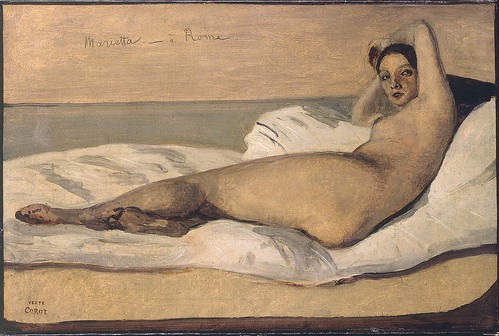
![Edgar Degas - Four Dancers [c.1899] by Gandalf's Gallery](http://farm8.staticflickr.com/7078/7293210204_7183a41141.jpg)
![Jens Juel - Joseph Greenway [1788] by Gandalf's Gallery](http://farm9.staticflickr.com/8158/7285103728_66a57306c5.jpg)
![Adriaen Brouwer - Tavern Scene [c.1635] by Gandalf's Gallery](http://farm8.staticflickr.com/7076/7285109716_32a54cd8c6.jpg)
![David Teniers the Younger - Peasants at Archery [c.1645] by Gandalf's Gallery](http://farm8.staticflickr.com/7214/7278308244_222d4eb0e9.jpg)
![Jan Verspronck - Girl Dressed in Blue [1641] by Gandalf's Gallery](http://farm8.staticflickr.com/7080/7278308378_b3a9378a44.jpg)
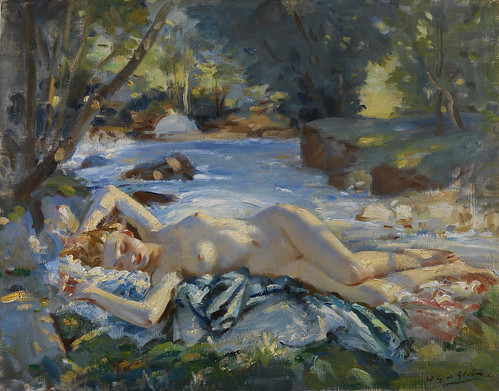
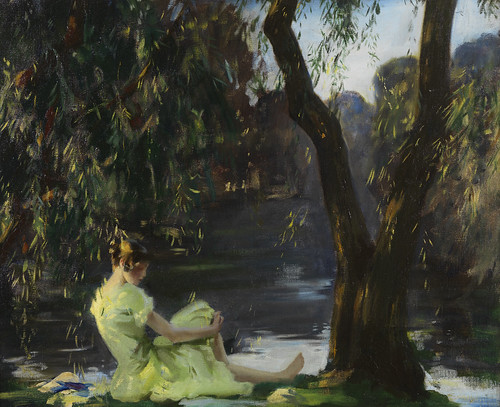
![Vincent van Gogh - Sunflowers [1887] by Gandalf's Gallery](http://farm8.staticflickr.com/7073/7266347474_fe00052f25.jpg)
![Vincent van Gogh - Self-Portrait [1889] by Gandalf's Gallery](http://farm9.staticflickr.com/8019/7266344734_1164ca2202.jpg)
![David Denby - Tea Time [1991] by Gandalf's Gallery](http://farm8.staticflickr.com/7080/7260580356_e1750d4b27.jpg)
![James McNeill Whistler - Wapping [1860-64] by Gandalf's Gallery](http://farm8.staticflickr.com/7218/7247552844_268aa33c14.jpg)

![Peter Paul Rubens - Venus and Cupid [c.1606-11] by Gandalf's Gallery](http://farm8.staticflickr.com/7227/7239967876_9ac917b5bc.jpg)
![Canaletto - Venice, The Piazza San Marco [c.1756] by Gandalf's Gallery](http://farm8.staticflickr.com/7220/7239963684_359ef38b04.jpg)
![Eugene Boudin - Trawlers [1887] by Gandalf's Gallery](http://farm8.staticflickr.com/7222/7232128024_3cc14b307e.jpg)

![Winslow Homer - Salt Kettle, Bermuda [1899] by Gandalf's Gallery](http://farm8.staticflickr.com/7105/7225708884_a615c69e33.jpg)
![Henri Rousseau - Rendezvous in the Forest [1889] by Gandalf's Gallery](http://farm8.staticflickr.com/7240/7220188882_cd6ac9a36d.jpg)
![Joseph Wright - The Corinthian Maid [1782-84] by Gandalf's Gallery](http://farm9.staticflickr.com/8017/7208264976_2df02d7af0.jpg)
![Louis-Léopold Boilly - The Painter’s Studio [c.1800] by Gandalf's Gallery](http://farm9.staticflickr.com/8166/7201709360_b6482eec67.jpg)
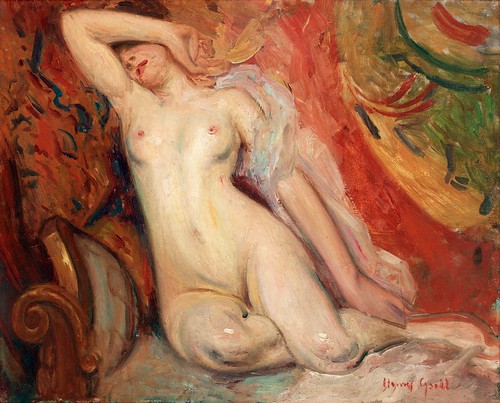
![David Dalla Venezia - Number 577 [2008] by Gandalf's Gallery](http://farm8.staticflickr.com/7215/7194699892_7af22b2e55.jpg)
![El Greco - Laocoön [c.1610-14] by Gandalf's Gallery](http://farm8.staticflickr.com/7093/7180730538_8f85578e1a.jpg)
![Junius Allen - Low Tide, Port Clyde [c.1950] by Gandalf's Gallery](http://farm8.staticflickr.com/7242/7180731146_dcdb635c63.jpg)
![Joachim Wtewael - The Judgement of Paris [1615] by Gandalf's Gallery](http://farm6.staticflickr.com/5458/7175256444_8abe470d4b.jpg)
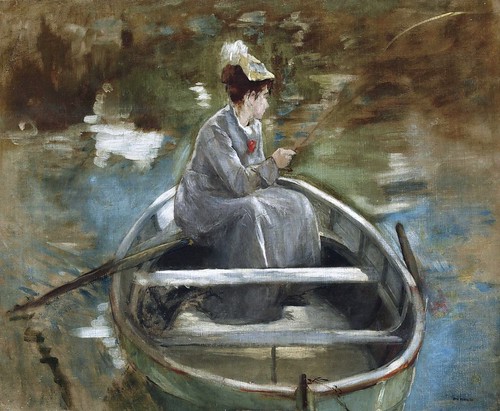
![Arkady Rylov - In the Blue Expanse [1918] by Gandalf's Gallery](http://farm8.staticflickr.com/7080/7169646972_4907e2f323.jpg)
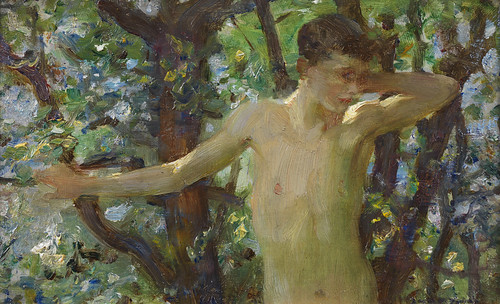
![Edouard Manet - The House at Rueil [1882] by Gandalf's Gallery](http://farm8.staticflickr.com/7085/7163555528_09341436ac.jpg)
![Berthe Morisot - Girl in a Boat with Geese [c.1889] by Gandalf's Gallery](http://farm8.staticflickr.com/7105/7156760666_f73461cd73.jpg)
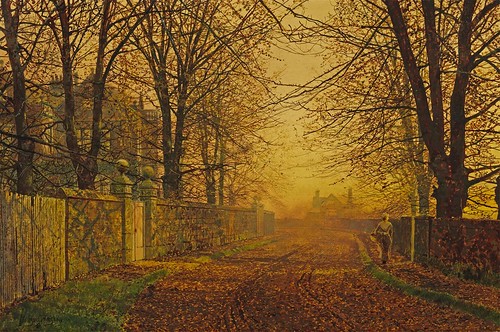
![Franz von Stuck - Fighting for a Woman [1905] by Gandalf's Gallery](http://farm9.staticflickr.com/8026/7151666403_ba202dec88.jpg)